4 Reasons You Should Buy a 4K TV
Thanks to falling prices and other factors, shoppers don’t have to sit on the ultra-HD sidelines anymore.
Technology waits for no man or woman. Witness that not long ago, the idea of buying a 4K Ultra HD TV was considered profligate: Who has that kind of money to throw around? Today, it's nearly unavoidable.
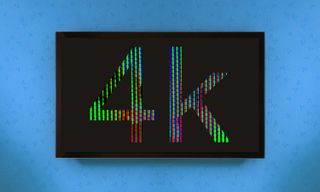
"It's the only choice out there now," said Paul Gray, principal analyst at IHS Technology. Gray follows global TV trends and points out that except for entry-level, bargain sets, "There's precious few sets that aren't 4K."
In fact, 50-inch, 4K Ultra HD sets capable of 3840 x 2160 pixel resolution are available for less than $350, with prices continuing to fall. In 2016, over 10 million 4K Ultra HD TVs were sold in the U.S., according to the Consumer Technology Association (CTA). By the end of 2017, the CTA expects over 15 million 4K sets to be sold in the U.S., accounting for over 40 percent of all TVs sold in America.
MORE: Best Cheap 4K TVs (Under $500)
Unfortunately, 4K programming and movies have not proliferated to the same degree as the TVs — there's a serious paucity of 4K movies and TV shows available. Nevertheless, the trend is clear, so don't try to fight it. It's time to stop worrying and embrace 4K and its latest picture-enhancing HDR (high dynamic range) features.
Reason No. 1: All of the best sets are 4K
The rule is, that you put the latest and greatest features into your top models, which is exactly what has been happening in TVs. So in addition to the higher 4K resolution, these Ultra HD sets also boast smarter TV interfaces and services, greater brightness, truer colors and even improved sound. For example, two of the best-looking sets we've ever tested, LG's 65-inch E7 OLED and Sony's 65-inch A1E, are also two of the best-sounding models we've ever heard.
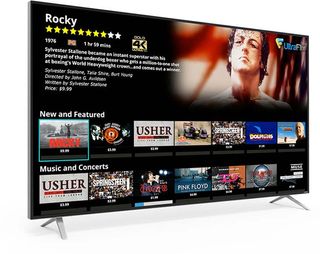
Moreover, standard HD sets are stagnating, since manufacturers are simply not bothering to put the same improvements into those devices. So if you want a better overall TV entertainment experience, you're looking at a 4K set.
MORE: Best 4K Ultra-HD TVs 2017
Reason No. 2: Better upscaling means a better standard HD picture
After some initial glitches converting HD programs to 4K resolution, TV makers have mostly sorted it out now, and in the process delivered a sharper picture, even for standard HD programs. Watching a Blu-ray disc, for example, on a 4K set can be a big, big improvement over standard HD TVs, thanks to crisper, more precise, upscaling. So even though the majority of programs you'll be watching will still be in HD, it will look better on a 4K set.
Reason No. 3: There's more 4K content coming. No, really.
While traditional broadcast networks are resisting the 4K wave, they are swimming against a riptide and are finding themselves increasingly irrelevant as people download and stream more video programming than ever. And streaming companies such as Netflix, Amazon Video and Vudu are carrying more 4K content now.

"Streamers are setting the agenda," Gray said, reminding us that software sells hardware. Amazon, for example, has around 100 4K movies, and more 4K software is coming. Dish Network and DirecTV have already added 4K channels and support.
The company that brought cord-cutting to the masses, Roku, is also getting viewers connected to more 4K material, starting with its $60 Roku Premiere set-top box. And Roku includes a 4K Spotlight channel, a curated listing of what's currently available online. You'll find 4K movies here such as Edge of Tomorrow and San Andreas, TV shows like House of Cards and 4K offerings from services such as YouTube and Netflix. Even Apple has finally joined the Ultra HD trend with its $179 Apple TV 4K streamer.
MORE: Where to Get 4K Content
While streaming is disrupting the old models, new 4K discs are appearing with more frequency along with the players, led by Samsung's $220 UBD-K8500 4K Blu-ray player, which is about half the price it was a year ago. There are now models from multiple manufacturers, as well, including LG's $230 UP970 and Philips' $250 Philips BDP7501. The discs themselves start at around $23, but most are $30, so it's still a premium purchase. Nevertheless, for serious movie fans, there is no better way to watch a film.
Reason No. 4: The HDR difference
Just when we thought consumer electronics companies had sorted out high-resolution video formats, along comes high dynamic range (HDR) to mess it all up. But HDR looks to be drifting toward a de facto standard, as well as offering an even more compelling reason to go with 4K.
HDR adds a wider color gamut, sharper color intensity and greater brightness to 4K pictures. It makes a clear visual difference, so it shouldn't be ignored. Unfortunately, the HDR format started out as at least three different formats: HDR10, Ultra HD Premium and Dolby Vision.
Some models, such as Vizio's latest top-of-the-line models, support Dolby Vision, sort of a souped-up version of HDR. Others support the Ultra HD Premium format (a more liberal version of HDR), and some, such as LG's 4K sets, support both -- as well as HDR10. Still other companies, such as Samsung, are sticking with their own peculiar HDR version; Samsung calls its format HDR10+.
However, the HDR worm looks to have turned. Recently, Sony and TCL caved in and joined the Dolby Vision camp, tipping the scales in its favor. There are also more than 100 studio titles, as well as more than 125 hours of original content, available in Dolby Vision across leading OTT providers and on Ultra HD Blu-ray discs.

Since Dolby Vision generally demands more out of TVs than the other HDR formats, if a set supports Dolby Vision it also should be able to handle the other versions of HDR (even if the manufacturer doesn't explicitly say so). That means there's a clear strategy for any buyer looking at purchasing a TV: You can forgo HDR and go for an inexpensive 4K Ultra HD model, such as the $450 55-inch 4K Insignia Roku TV. Or you can splurge and purchase a set that conforms to the Dolby Vision HDR format, which should future-proof your TV and make it compatible, come what may.
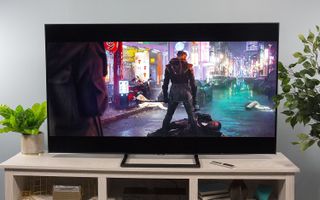
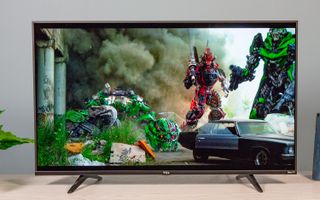
The TCL 43S517 Roku Smart 4K TV offers a 43-inch 4K TV that's packed with premium features, excellent performance and a sweet bargain price.
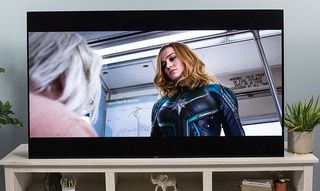
The Sony Master Series A9F OLED TV is one of the best OLED TVs on the market, and blows away the competition with its great picture quality, an innovative sound system and an improved version of Android TV. It's the best Sony TV we've seen and one of the best TVs on the market period.
Sign up to get the BEST of Tom's Guide direct to your inbox.
Here at Tom’s Guide our expert editors are committed to bringing you the best news, reviews and guides to help you stay informed and ahead of the curve!
John R. Quain has been reviewing and testing video and audio equipment for more than 20 years. For Tom's Guide, he has reviewed televisions, HDTV antennas, electric bikes, electric cars, as well as other outdoor equipment. He is currently a contributor to The New York Times and the CBS News television program.
